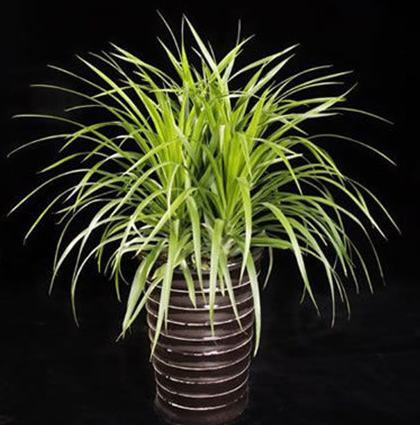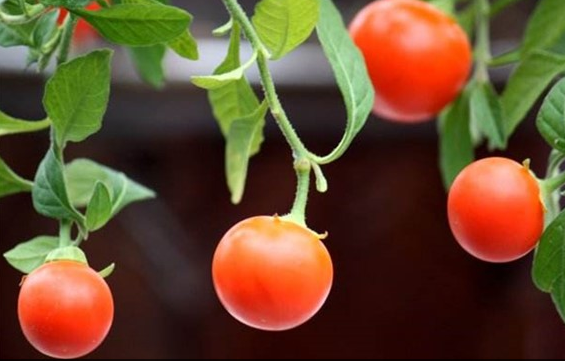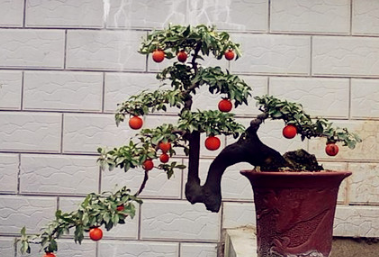Is the dragon blood tree poisonous? can you keep it at home? what are the reasons for yellowing leaves?
Dragon blood tree, also known as the tree of blood, blood-activating holy medicine, plant birthday. It is a valuable Yunnan red medicine-Draconis Draconis, also known as Qilin Draconis, which is as famous as Yunnan Baiyao. Li Shizhen's Compendium of Materia Medica is known as "blood-activating holy medicine"! So is this plant poisonous in the end? Let's get to know it.

Is the dragon blood tree poisonous? can you keep it at home?
Dragon Blood Tree, the name sounds like a flood of force is about to burst out. Such a personalized plant, will it be poisonous? can it be raised at home?
1. Is the dragon blood tree poisonous?
Dragon blood tree is poisonous because it can be used as medicinal material. These days, drugs without any side effects are embarrassed to be called drugs, but can only be called Banlangen.
Dragon blood tree can treat muscle and bone pain. It can activate blood circulation and remove blood stasis, and it is a very valuable medicine. It is normal for such a valuable medicinal material to have a little toxicity.
Accidentally cut the bark of the dragon blood tree, it will flow out like blood liquid, this liquid is actually its resin, dark red, not only can cure disease, but also can be used as a preservative, can be used as paint. The little expert in plants is our dragon blood tree!
2. Can the dragon blood tree be kept at home?
Dragon blood tree is a common indoor ornamental plant, so it is very suitable for domestic cultivation. However, in this breeding, we need to pay attention to some things.
Dragon blood tree can be used as a medicinal material, and the so-called toxicity of dragon blood tree is only for medicinal purposes. Therefore, the toxicity of dragon blood tree in family breeding can be ignored.
However, for the sake of safety, it is best to put the dragon blood tree in the living room, balcony and other positions, not recommended to put the bedroom, because the sap of the dragon blood tree will cause some people's allergic reaction.
Dragon blood tree in the living room or balcony, but also can absorb the dust in the air and so on, purify the air, make your breath cleaner, very suitable for housekeeping.
Of course, children who will be dizzy with blood should not be raised. In case a person accidentally scrapes and flows out some dark red resin, he must not call an ambulance.
What are the reasons for the yellowing of the leaves of Dragon Blood Tree?
1. The basin has not been changed for a long time.
Although the dragon blood tree is a longevity master with strong vitality, it is also uncomfortable if you have to keep it as a picked-up child for a long time.
If the pot is not changed for a long time, the growth space of the plant root system is insufficient, the ability to absorb nutrients decreases, the plant condition becomes worse, and the leaves turn yellow.
2. Hurt the root when changing the basin
In many cases, some injuries are inevitable, who can guarantee that I can dig a complete potato with a hoe?
It's the same with changing pots, always try your best to be careful, but it doesn't work, it still hurts the roots. After injuring the root system, the dragon blood tree on the pot can not be maintained normally and needs to wait for it to slow down.
In the process of slowing down the seedlings, there will be leaves yellowing, or even falling.
3. Improper management of water and fertilizer
The new leaves of the dragon blood tree are yellow, it is not enough water, if the old leaves are yellow, it is not enough nutrients. Dry air can also lead to yellowing of leaves due to lack of moisture.
4. Obstruction of diseases and insect pests
There is a large area of leaf fall, which may be caused by root rot or insect pests. At this time, check the root system, and then check the leaves for eggs.
What if the leaves of the dragon blood tree turn yellow?
1. Change the basin
Dragon blood tree can be changed every 2-3 years, the basin as far as possible to choose a little larger, to give enough room for growth, bondage, there will never be a thriving plant.
When changing the basin, not try to avoid damaging the root system, but try your best to avoid injuring the root system, do your duty, or hurt, then let it slow down, it's all right, it's very strong!
2. Watering and fertilization go hand in hand
Dragon blood trees can be applied thin and diligently in spring, summer and autumn, except that there is no need to apply fertilizer in winter. The basin soil remains moist and can spray water to the leaves and spray to the top of the plant if necessary to increase air humidity.
The dragon blood tree that has been kept in the shade for a long time can also bask in the sun properly, carry out photosynthesis and smell the smell of the sun.
3. The emergence of diseases and insect pests is unbearable.
The emergence of diseases and insect pests, must be timely inspection, timely spraying, timely rescue of those leaves that have not yet yellowed.
The cultivation method and matters needing attention of dragon blood tree, the meaning of dragon blood tree, dragon blood tree species dragon blood tree its Latin name comes from the Greek word (δ), meaning "female dragon", including about 40 species of plants, including trees, shrubs and succulent plants, according to the APG II classification, it is incorporated into the false leaf tree family, and there is also a separate classification method for the family Polygonaceae or into the tequila family. Culture methods and matters needing attention of Dragon Blood Tree
First, the culture method of dragon blood tree:
1. Soil: Dragon blood tree likes loose, fertile and permeable sandy soil. An appropriate amount of organic fertilizer and ferrous sulfate can be added to the nutritious soil.
2. Watering: Dragon blood tree has strong drought resistance, watering should not be too much to prevent tree trunk from rotting. It can be watered every ten days or half a month to keep the basin slightly dry.
3. Illumination: the dragon blood tree likes the light but is afraid of the hot sun exposure. The dragon blood tree likes the warm, moist and sunny environment and is resistant to semi-shade and dryness. The light is sufficient and the leaves are colorful.
The moral of Dragon Blood Tree
When Chinese people celebrate their birthday to the elderly, they especially like to say, "I wish you happiness as long as the East China Sea, and your life is better than that of the South Mountain." Nanshan here refers to Nanshan in Hainan. In fact, Nanshan is not old pine, is the dragon blood tree.
So the moral is: longevity, happiness, and well-being.
Dragon blood tree species
1. Red Dragon Blood Tree (Draconis Draconis)
The red dragon blood tree is famous for producing red dragon blood resin, which is called Draconis Draconis in China. There are about 150 species in the world, distributed in tropical and subtropical regions of Africa, Asia and Australia. The dragon blood tree of Cambodia, a resource plant of Draconis Draconis, was discovered in China in 1973. Up to now, eight species of dragon blood tree have been excavated in China, and these species are distributed in Guangxi, Hainan, Yunnan and Taiwan. Draconis Draconis is often used in medicine and antiseptic, with hemostasis, promoting blood circulation, tonifying blood, both internal and external use, and is praised as "holy medicine". Dragon blood tree has high ornamental value, such as fragrant dragon blood tree has become an important foliage plant in the world.
The leaves of dragon blood are yellow at the tip.
The main causes of yellow leaf disease of dragon blood tree are as follows: (1) lack of light; (2) low temperature; (3) diseases and insect pests; (4) soil pH is not suitable.
Pest control: because the ring culture is dry, the dragon blood tree is placed on the balcony or indoor windowsill for a long time, it is easy to grow red spiders. Dragon blood tree suffered from its harm, the leaves faded, chlorophyll was destroyed, the surface appeared dense small yellow spots, small macula, and gradually atrophied, yellowed, withered, serious shedding, losing its due ornamental value.
Prevention and control methods: red spiders often hide in branches, leaves on the back or when the dense place, pull the net hidden, manual capture is relatively easy. If it is treated with chemicals, 20% trichloroacarol emulsion can be added with 800 times of water to make a solution spray, which has a good killing effect on adults, nymphs and eggs.
Dragon blood tree pruning
There are two kinds of pruning and shaping methods for dragon blood tree.
1. Cut into "T" plant type
The "T" type plant type is that the leaves grow only at the top of the main rod, and there are no leaves below the top. The whole plant type is like the English letter "T".
Specific operation: make the lower defoliation main rod into a "T" shaped main rod, cut flat at the appropriate height of the plant, retain the new branches and leaves on the top of the main rod, erase the lateral buds on the main rod at any time, and it can be formed after a period of practice.
The function of Dragon Blood Tree
Fengshui effect of Dragon Blood Tree
1. If the family door faces south, Dragon Blood Tree plays a positive role in fengshui. The gate belongs to fire to the south, it is appropriate to plant plants belonging to fire and wood, and plant dragon blood tree to increase the positive energy of fire. At this time, a dragon blood tree can be placed at the entrance of the living room, the corner of the hall or the staircase, which is conducive to adjusting the health of people's heart and intestines and stomach. Some people in the room are introverted and timid, melancholy, lack of courage and confidence in life and other negative personalities also have the role of adjustment.
Is the dragon blood tree poisonous?
Dragon blood tree is a common plant for indoor flower viewing, dragon blood tree can be used as a kind of medicinal materials, and the so-called toxicity of dragon blood tree is only for medicinal purposes, so family breeding can be ignored, but, dragon blood tree had better be placed in the living room, balcony and other positions, not recommended to put in the bedroom, because its juice will cause some people's allergic reaction.
Related encyclopedia
Pocket scale non-woven bag lantern bamboo shoots crab feet red rice note3ykk zipper ybs zipper mountain cherry climbing wall plum field decision tomorrow winter plum green pine watch omega Longine watch children's building blocks rhododendron roll stick fruit Annona
Is Yemeni Iron Blossom poisonous? Yemeni Iron Photo Collection
Yimen iron is a kind of green plant belonging to the genus Liliaceae, and its leaf posture is very graceful, so it is suitable to be used as an excellent plant for all kinds of household decoration, and it is suitable for being placed in the living room, study, office and so on. it has the adsorption of formaldehyde, toluene and other harmful substances, is a kind of indoor shade-tolerant plant. Its ability to light is very strong, suitable to be placed in a relatively dark place, has a very good ornamental value. Let's take a look at whether the Yemeni iron blossom is poisonous, and have a simple appreciation of the Yemeni iron picture collection.
[Yimen Iron Picture-morphological characteristics] Yimen Iron is a small evergreen tree plant, its plant height is generally 4cm, the leaf is very wide, and is linear, relatively leathery, the shape is oval or oblong, the base position is heart-shaped, growing the upper part of the stem. There is a wide yellow stripe in the middle of the Yemeni iron. The edge of the leaf is green, the edge is acuminate and slightly obtuse, and it is curved and arched. The plant height of Yemeni iron is 60-120cm. It is a very popular indoor potted plant. It is generally raised in the study, living room, home indoor and so on, looks very elegant and simple to give people a kind of exotic feeling. Its plant shape is very beautiful and regular, and it is a very famous indoor foliage plant in the world.
[Yemeni Iron Photo Daquan-growth habits] Yemeni iron likes to grow in a sunny, moist, well-ventilated environment, and its semi-shade tolerance is very good, but it can not grow in a male forehead environment for a long time. Some astigmatism can be irradiated, otherwise the plant will grow too much. Avoid direct sunlight in the summer, otherwise the leaves will be burned and the leaves will turn yellow or white. In the case of insufficient light, the color of Yemeni iron leaves is grayish green, the glossiness is not particularly good, and the leaves at the base are yellow, thus losing ornamental value. Yemeni iron in the growth, do not pour too much water, keep dry and wet, this is more conducive to the growth of Yemeni iron. Moreover, it is necessary to maintain the cleanliness of Yemeni iron, and the amount of fertilizer should be combined with watering water, and some water-soluble rotten fertilizers, preferably cake fertilizer, should be applied, especially during the growing period, which is more conducive to the growth of Yemeni iron.
[Yimen Iron Photo Daquan-Culture method] when cultivating Yemeni iron, choose a better variety, plant growth should be more robust, and there is no disease and insect harm to the plant, cutting propagation. Keep the soil moist and loose after cutting, and the air fluidity is better. Cover the plant with plastic film to maintain humidity and temperature. At the same time, tiles or conditions should also be used for drainage and ventilation, put in the shadows during the day in spring, summer and autumn, breed in the open world at night, and be placed indoors in winter to maintain the temperature and humidity of the environment. The temperature suitable for growth is 20-30 degrees Celsius, and the temperature should not be lower than 10 degrees Celsius in winter, otherwise the leaves will wither or turn yellow. In the case of lack of light, put in a semi-overcast environment to give a certain amount of radiation, which is more conducive to growth. And keep the surface of the leaves clean, otherwise it will bring diseases and insect pests, thus reducing the ornamental value.
Yemeni iron is a kind of foliage plant with very good ornamental value. It is suitable for indoor breeding and can help absorb harmful gases such as formaldehyde and toluene in the air. It is a kind of indoor plant with good shade tolerance. It blossoms, and flowers give off fragrance when they are in full bloom, as well as pollen and mucus, and many people question the temperature at which Yemeni iron blossoms are toxic. Yemeni iron flowering is non-toxic, but if some people are physically sensitive, they will have symptoms such as allergies or allergic diseases when Yemeni iron blossoms, so you can rest assured when raising Yemeni iron. Yemeni iron flowering does not have any poison.
More information about carnation flower picture of carnation plum picture of rubber tree culture method of white palm
- Prev

Culture methods and precautions of winter coral what to do if it doesn't turn out?
Winter coral is a more popular ornamental fruit pot, raise a pot of winter coral at home, the fruit is round, very lovely, I believe it is a good choice for flower friends who like ornamental fruit plants. Winter coral
- Next

Propagation, cultivation and management of bonsai with rare hanging fruit and golden marbles
Golden marbles is a very festive hanging fruit, especially every year from New Year's Day to the Spring Festival, hanging fruit golden marbles in the green leaves from green to red, red and green, dried iron Qiu branches, full of vitality. Then follow in the footsteps of the editor to learn about the golden marbles! Differences in origin and varieties of golden marbles
Related
- Fuxing push coffee new agricultural production and marketing class: lack of small-scale processing plants
- Jujube rice field leisure farm deep ploughing Yilan for five years to create a space for organic food and play
- Nongyu Farm-A trial of organic papaya for brave women with advanced technology
- Four points for attention in the prevention and control of diseases and insect pests of edible fungi
- How to add nutrient solution to Edible Fungi
- Is there any good way to control edible fungus mites?
- Open Inoculation Technology of Edible Fungi
- Is there any clever way to use fertilizer for edible fungus in winter?
- What agents are used to kill the pathogens of edible fungi in the mushroom shed?
- Rapid drying of Edible Fungi

